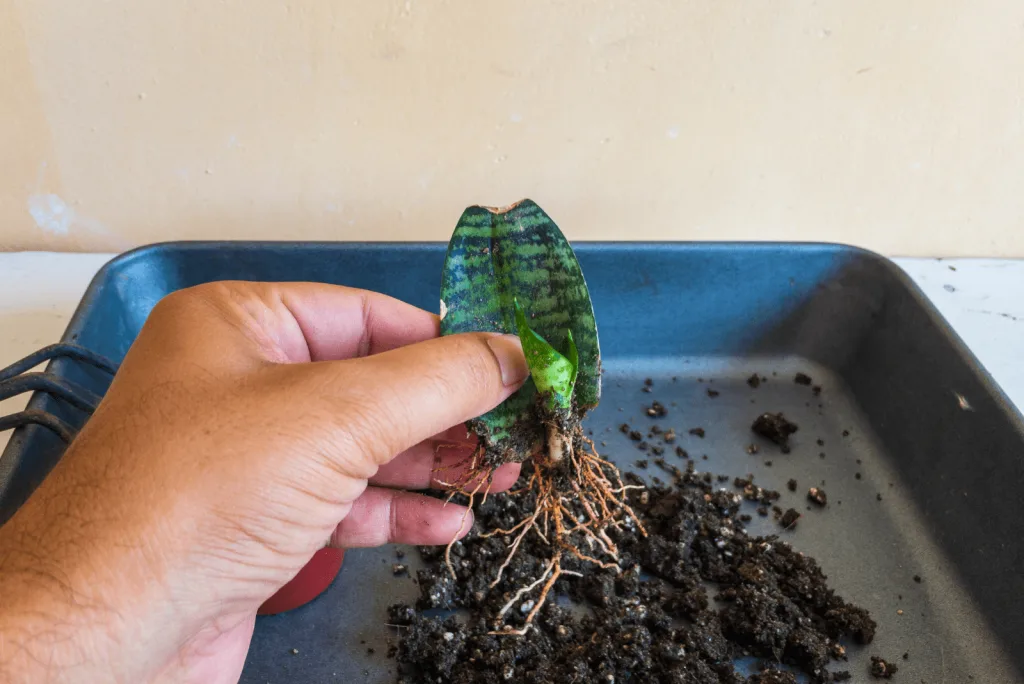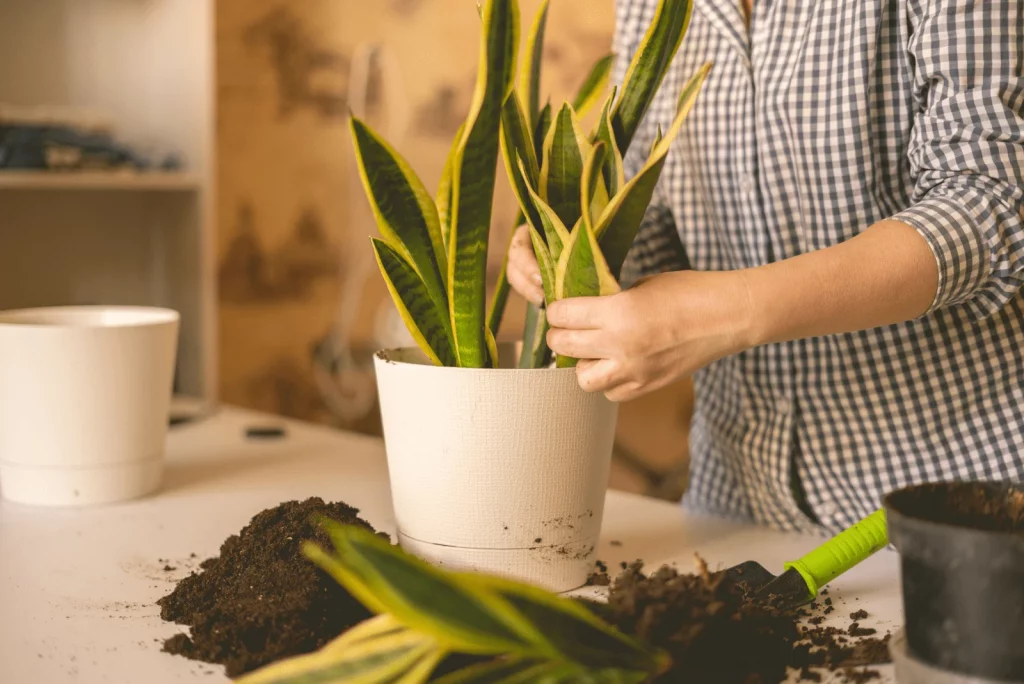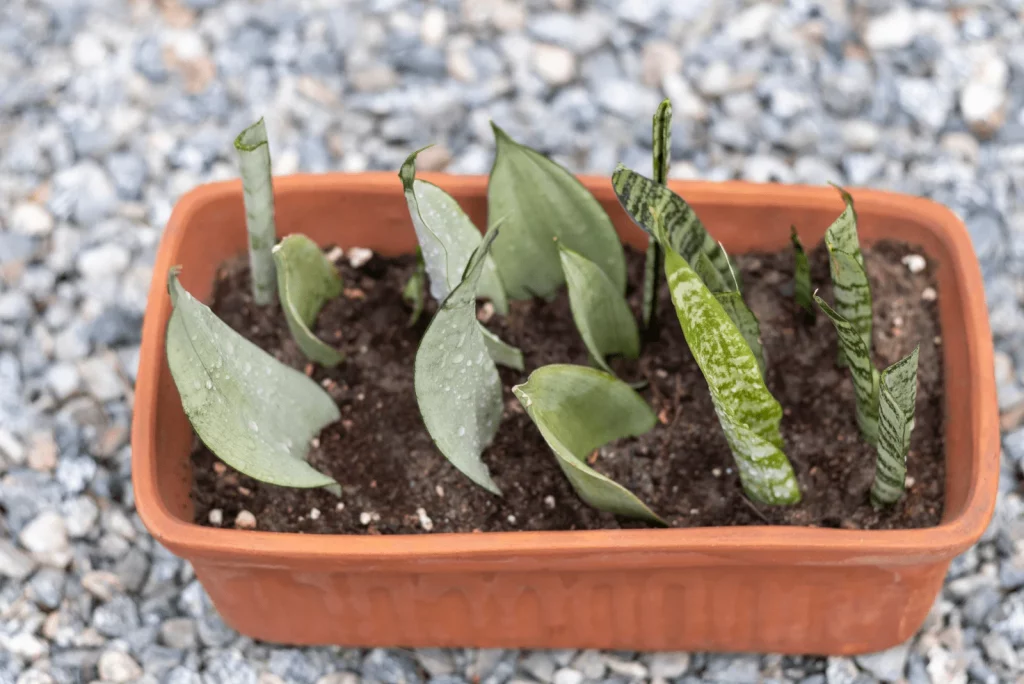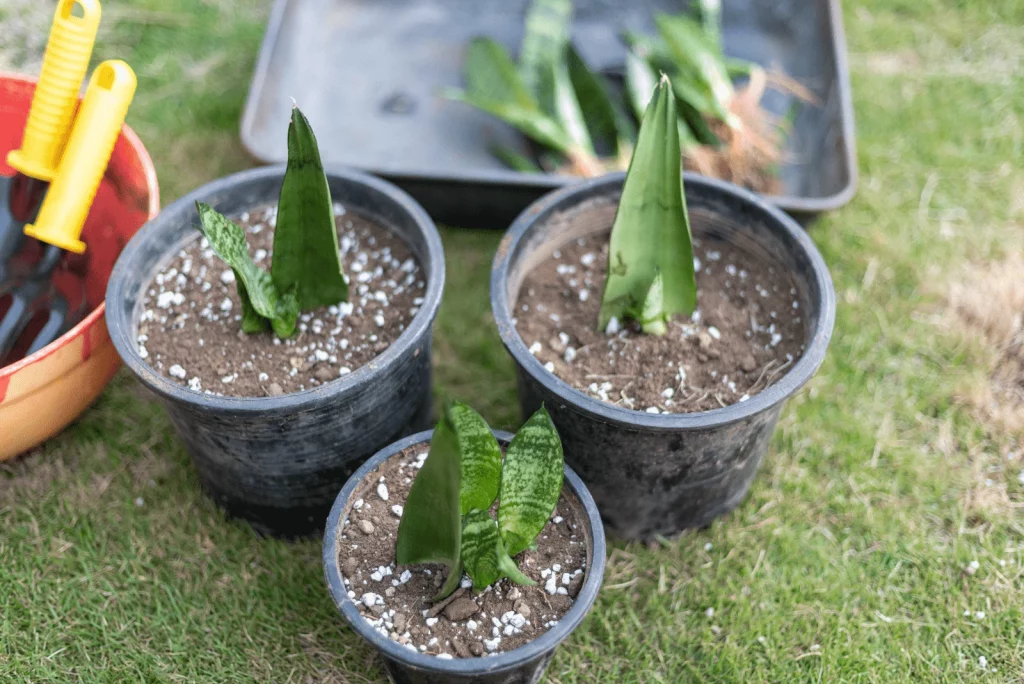If you were to ask which plant has the quirkiest nicknames, the snake plant would definitely top the list.
And, if you’re married, I’d recommend avoiding the nickname “mother-in-law’s tongue” – trust me on this one!
But jokes aside, Sansevieria plants are simply amazing. They’re not only strikingly beautiful but also super easy to care for. So, it’s no surprise that so many gardeners are eager to propagate their snake plants.
The great news? There are several foolproof methods, each with a high success rate, so your home will soon be filled with new snake plants in no time!
But, like anything worth doing, you’ve got to follow the steps carefully. Don’t worry – I’ll walk you through everything so you don’t miss a thing.
In this guide, I’ll cover the four best methods to propagate snake plants: water propagation, soil propagation, division, and rhizome cutting.
Ready? Let’s dive in!
Method 1: Water Propagation for Snake Plants

The first method is a favorite among plant enthusiasts for its simplicity and high success rate – propagating in water.
Water propagation works wonders for many houseplants, and snake plants are no exception. However, to ensure the best results, you’ll need to follow the steps closely. Don’t worry – it’s easier than you think.
Gather Your Supplies
Before getting started, let’s talk tools. Successful propagation starts with proper preparation. You don’t want to be scrambling for supplies halfway through!
Start with gloves (optional, but helpful if you want to keep your hands clean). Make sure they aren’t too rough since Sansevieria cuttings are delicate.
Next, you’ll need a sterilizing solution. This is non-negotiable – it’s crucial for keeping your tools and cuttings free from contamination.

For cutting, a sharp knife is your best friend – trust me, it makes all the difference. Finally, grab a transparent container for rooting. You can use rooting hormone if you’d like to speed things up, but it’s not required.
Taking the Cutting
Choose a healthy leaf from your snake plant and make a clean cut close to the base. If you have a large snake plant, you can even cut the leaf into several sections, rooting each one individually.
Pro tip: Cut the leaf in a V-shape. This gives the cutting more surface area to absorb water and helps you remember which end goes into the water (you don’t want to plant it upside down!).
Rooting the Cuttings in Water
Now, you might be thinking: “Do I just plop the cutting into water?”
Well, not quite. You need to pay attention to a few things:

Fill your container with fresh water, making sure the lower part of the cutting is submerged. Keep the cuttings upright, just like they were in the soil.
Change the water every few days to prevent it from becoming murky or smelly. Over the next several weeks, you’ll start to see roots form.
Transplanting the Cuttings
Patience is key here – rooting can take anywhere from six weeks to a couple of months. Once the roots are well established, it’s time to move them to soil.
Plant the cuttings at the same depth they were submerged in water. Don’t worry if you see tiny shoots sprouting. Those will turn into new leaves soon!
Method 2: Soil Propagation for Snake Plants

Now, let’s talk about propagating directly in soil. This method is similar to water propagation but skips the middleman (the water) and goes straight into the dirt.
Preparing the Cutting
Like water propagation, you’ll start by cutting a healthy leaf close to the base. Let the cuttings dry out for 3-5 days before planting them in soil – this helps them heal and prevents rot.
Choosing the Right Soil
It’s crucial to use a well-draining soil mix. Succulent or cactus soil is perfect for snake plants. You can also mix your own using potting soil, perlite, sand, and pumice.
Plant the cuttings upright in the soil and water lightly. Keep the soil moist but not soggy until the cuttings take root.
How Long Does It Take for Snake Plants to Grow from Propagation?

Growth speed can vary, but generally, you’ll see new shoots within 4 weeks. However, if conditions like light and humidity are less than ideal, it might take up to three months to see results.
Pro Tip: If you want to speed things up, creating the right conditions is crucial. Snake plants thrive in bright, indirect light, and while they tolerate low light, they’ll grow much faster with plenty of sunshine. Keep the temperature between 65-85°F (18-29°C) for best results.
Your Snake Plant Journey Starts Here
The beauty of propagating snake plants? It’s like creating little green gifts for yourself – or better yet, for your friends and family!
Not only do you get to expand your collection for free, but you can also rescue struggling plants and give them new life.
Whether you choose water, soil, or division, snake plant propagation is easy, fun, and rewarding. Just follow these simple steps, and before you know it, you’ll have a whole jungle of these amazing plants.
Happy propagating!


